Do you have a question about the peplink balance ONE and is the answer not in the manual?
Compares capacity, core functionality, VPN, WLAN, QoS, networking, device, and hardware across models.
Lists general network features supported by the Balance series routers.
Details WAN support: multiple IPs, cellular modems, NAT, and health checks.
Describes LAN features: DHCP server, static routing, and VLAN support.
Covers VPN capabilities: SpeedFusion, L2TP, and IPsec support.
Explains inbound traffic management, outbound policy, AP controller, QoS, and firewall.
Lists miscellaneous features: web admin, remote config, IPv6.
Lists package contents for various Peplink Balance and MediaFast models.
Provides overviews of specific models, including front panel appearance and LED indicators.
Guides on necessary items and steps for connecting the Peplink Balance to the network.
Explains how to access and log into the web administration interface.
Guides through the setup wizard for WAN connections and initial settings.
Details advanced WAN settings and cellular WAN configuration.
Describes MediaFast content caching and scheduling prefetching.
Covers MDM capabilities and viewing MediaFast usage statistics.
Details LAN configuration with VLAN support for network segmentation.
Covers physical WAN settings and connection methods (DHCP, Static IP, PPPoE, L2TP, Mobile).
Details WAN health checks, bandwidth monitoring, additional IPs, and dynamic DNS settings.
Covers SpeedFusion profile setup, NAT considerations, and status monitoring.
Details IPsec VPN profile creation and management options.
Explains traffic policy selections: Compatibility, Normal, Custom.
Details creating and managing custom rules for outbound traffic.
Guides on defining servers and setting up port forwarding rules.
Explains defining services, DNS records, and reverse lookup zones.
Guides on importing DNS records via zone transfer.
Explains categorizing clients and controlling bandwidth for user groups.
Covers application prioritization and custom application setup.
Details DSL/Cable Optimization for performance on limited upload bandwidth.
Details configuring outbound and inbound firewall access rules.
Explains enabling intrusion detection and DoS prevention.
Details blocking websites and exempting groups or subnets.
Explains configuring high availability (HA) using VRRP for redundancy.
Covers certificate assignment and forwarding services (SMTP, Proxy, DNS).
Details AP management, controller, SSID, and security settings.
Covers AP profiles, info, usage, status, rogue APs, and toolbox features.
Explains admin security, user accounts, and firmware upgrade procedures.
Details time sync, email alerts, event log, SNMP, InControl, and config management.
Covers activating features and system reboot options.
Explains diagnostic tools: Ping, Traceroute, and CLI access.
Shows system info, active sessions, client lists, WINS clients, OSPF/RIPv2 status.
Displays SpeedFusion status, connection details, performance, and event logs.
Displays bandwidth usage: real-time, hourly, daily, monthly.
Describes packet flow and advantages of NAT mode and IP forwarding.
Offers solutions for optimizing performance using load balancing scenarios.
Details firewall bypass and inbound/outbound access restriction scenarios.
Lists specifications for various Peplink Balance and MediaFast models.
Compares capacity, core functionality, VPN, WLAN, QoS, networking, device, and hardware across models.
Lists general network features supported by the Balance series routers.
Details WAN support: multiple IPs, cellular modems, NAT, and health checks.
Describes LAN features: DHCP server, static routing, and VLAN support.
Covers VPN capabilities: SpeedFusion, L2TP, and IPsec support.
Explains inbound traffic management, outbound policy, AP controller, QoS, and firewall.
Lists miscellaneous features: web admin, remote config, IPv6.
Lists package contents for various Peplink Balance and MediaFast models.
Provides overviews of specific models, including front panel appearance and LED indicators.
Guides on necessary items and steps for connecting the Peplink Balance to the network.
Explains how to access and log into the web administration interface.
Guides through the setup wizard for WAN connections and initial settings.
Details advanced WAN settings and cellular WAN configuration.
Describes MediaFast content caching and scheduling prefetching.
Covers MDM capabilities and viewing MediaFast usage statistics.
Details LAN configuration with VLAN support for network segmentation.
Covers physical WAN settings and connection methods (DHCP, Static IP, PPPoE, L2TP, Mobile).
Details WAN health checks, bandwidth monitoring, additional IPs, and dynamic DNS settings.
Covers SpeedFusion profile setup, NAT considerations, and status monitoring.
Details IPsec VPN profile creation and management options.
Explains traffic policy selections: Compatibility, Normal, Custom.
Details creating and managing custom rules for outbound traffic.
Guides on defining servers and setting up port forwarding rules.
Explains defining services, DNS records, and reverse lookup zones.
Guides on importing DNS records via zone transfer.
Explains categorizing clients and controlling bandwidth for user groups.
Covers application prioritization and custom application setup.
Details DSL/Cable Optimization for performance on limited upload bandwidth.
Details configuring outbound and inbound firewall access rules.
Explains enabling intrusion detection and DoS prevention.
Details blocking websites and exempting groups or subnets.
Explains configuring high availability (HA) using VRRP for redundancy.
Covers certificate assignment and forwarding services (SMTP, Proxy, DNS).
Details AP management, controller, SSID, and security settings.
Covers AP profiles, info, usage, status, rogue APs, and toolbox features.
Explains admin security, user accounts, and firmware upgrade procedures.
Details time sync, email alerts, event log, SNMP, InControl, and config management.
Covers activating features and system reboot options.
Explains diagnostic tools: Ping, Traceroute, and CLI access.
Shows system info, active sessions, client lists, WINS clients, OSPF/RIPv2 status.
Displays SpeedFusion status, connection details, performance, and event logs.
Displays bandwidth usage: real-time, hourly, daily, monthly.
Describes packet flow and advantages of NAT mode and IP forwarding.
Offers solutions for optimizing performance using load balancing scenarios.
Details firewall bypass and inbound/outbound access restriction scenarios.
Lists specifications for various Peplink Balance and MediaFast models.
| WAN Ports | 2 |
|---|---|
| Load Balancing | Yes |
| VPN Support | Yes |
| USB WAN Modem Support | Yes |
| Firewall Throughput | 600 Mbps |
| PepVPN/SpeedFusion Throughput (AES 256) | 30 Mbps |
| Number of PepVPN/SpeedFusion Tunnels | 5 |
| USB Ports | 1 |
| Power over Ethernet (PoE) | No |
| Humidity | 15% – 95% (non-condensing) |
| Wi-Fi Standard | 802.11ac/a/b/g/n |
| Operating Temperature | 0° to 40°C |
| Power Supply | AC Adapter |
| Storage Temperature | -40° to 65°C |
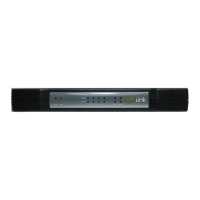
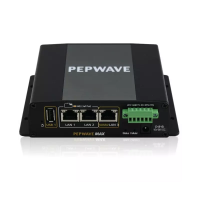

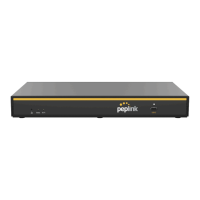
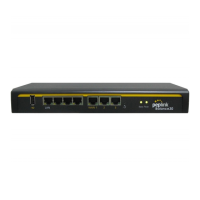
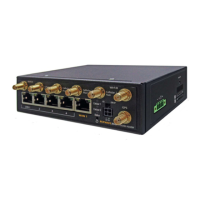
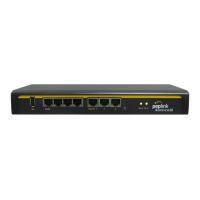



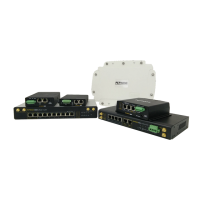

